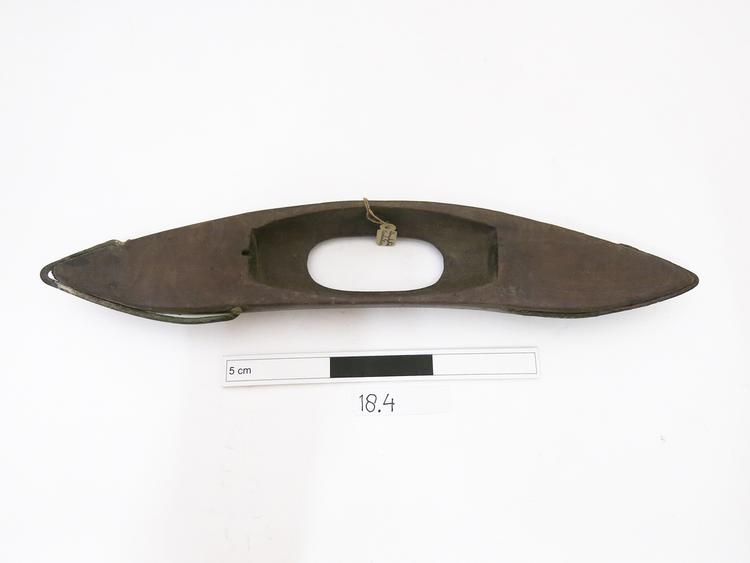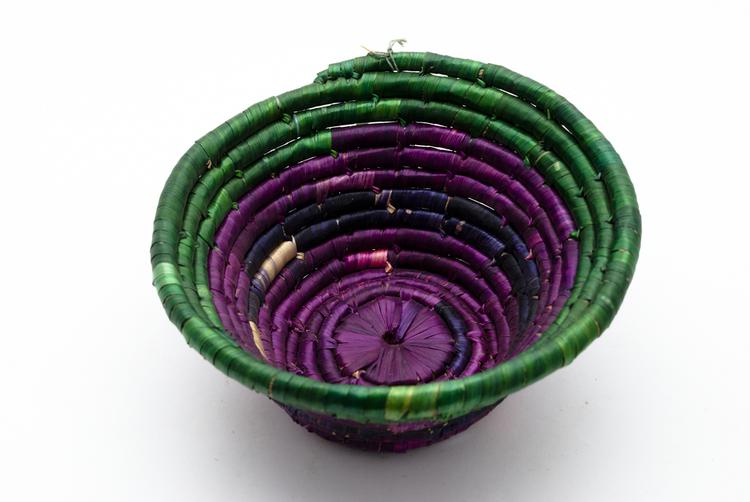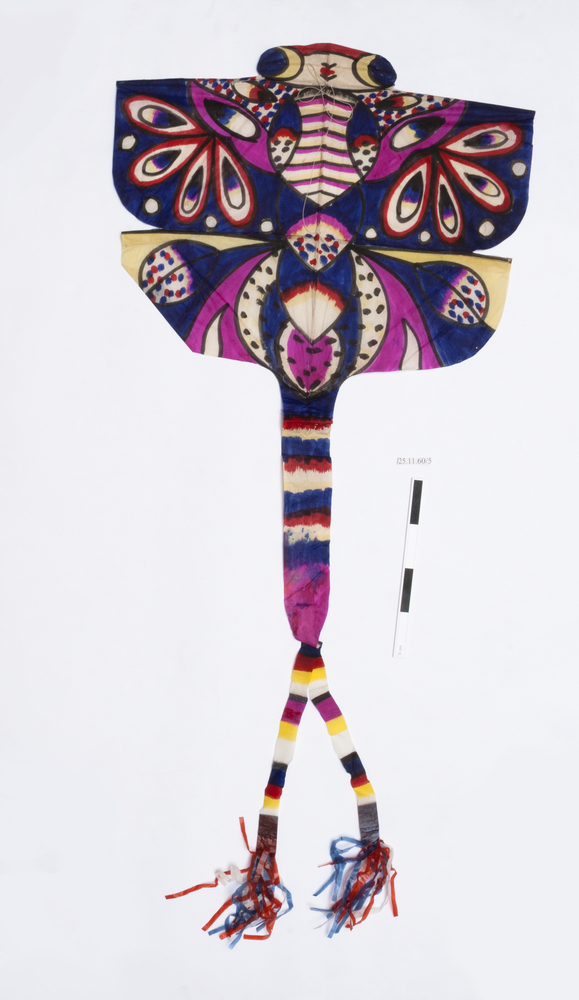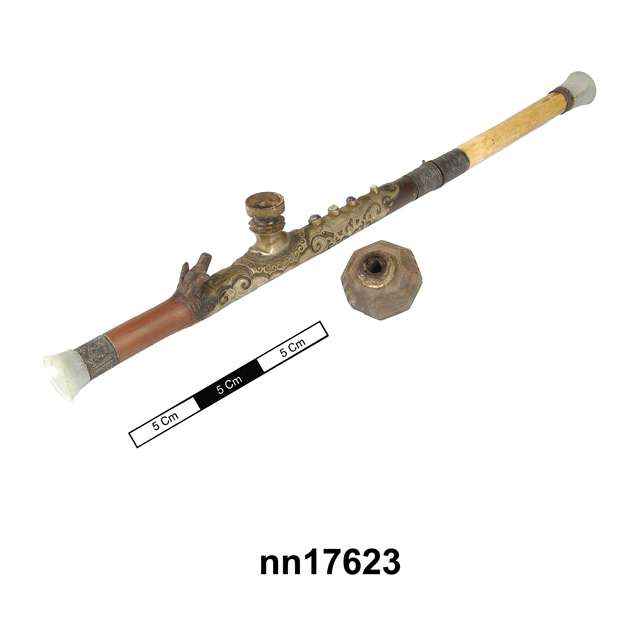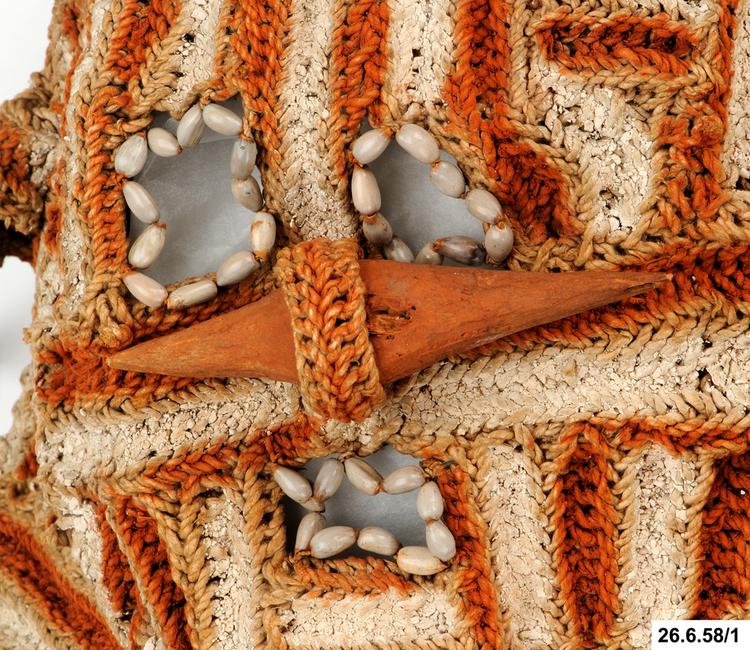
Mask made from strips of twined bark fibre bound together in vertical and horizontal bands, the structure accentuated by overpainting in red and white stripes of mineral paint. The mask covers the face and upper part of the body as far as the waist, extending around the back of the body, with armholes. Eye and nose apertures are trimmed with Job's tears seeds. Such masks were constructed to represent deceased ancestors at special funerary ceremonies.
This is, as the description correctly notes, a Safan spirit costume and it is worn on the upper body with the arms protruding from the sides. This particular design looks as though it comes from the Casuarina Coast and possibly from a village like Basim or Buepis (see Konrad, Sowada and Konrad page 337 fig 504). It looks in good condition for a costume of that age. The purpose of the costume is briefly but correctly indicated. The best and most noteworthy account (illustrated) is by Gerardus Zegwaard’s (1993) ‘Jipai: festival of the mask costumes’ in D. Smidt (ed) Asmat art: woodcarvings of southwest New Guinea, pages 33-45.



